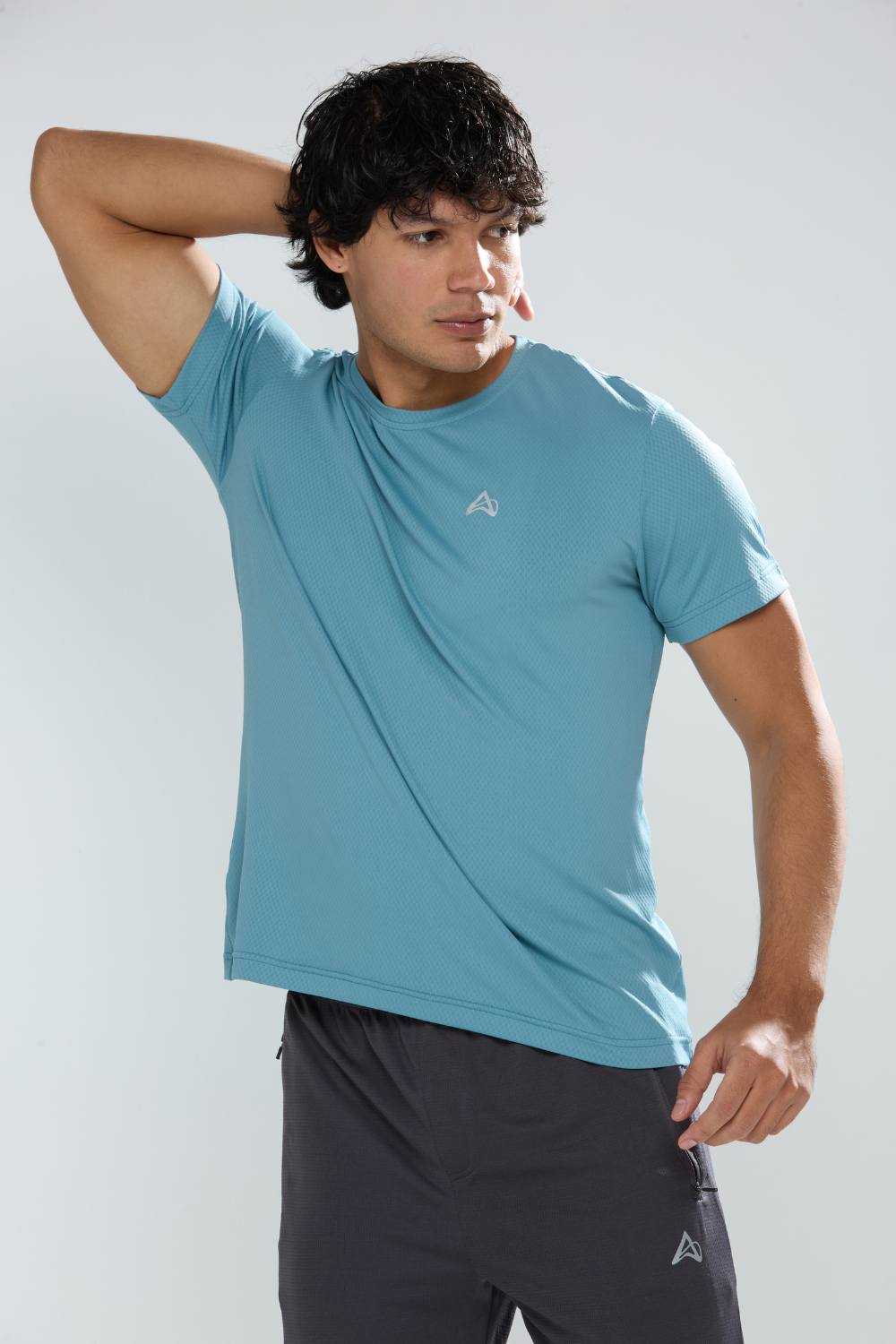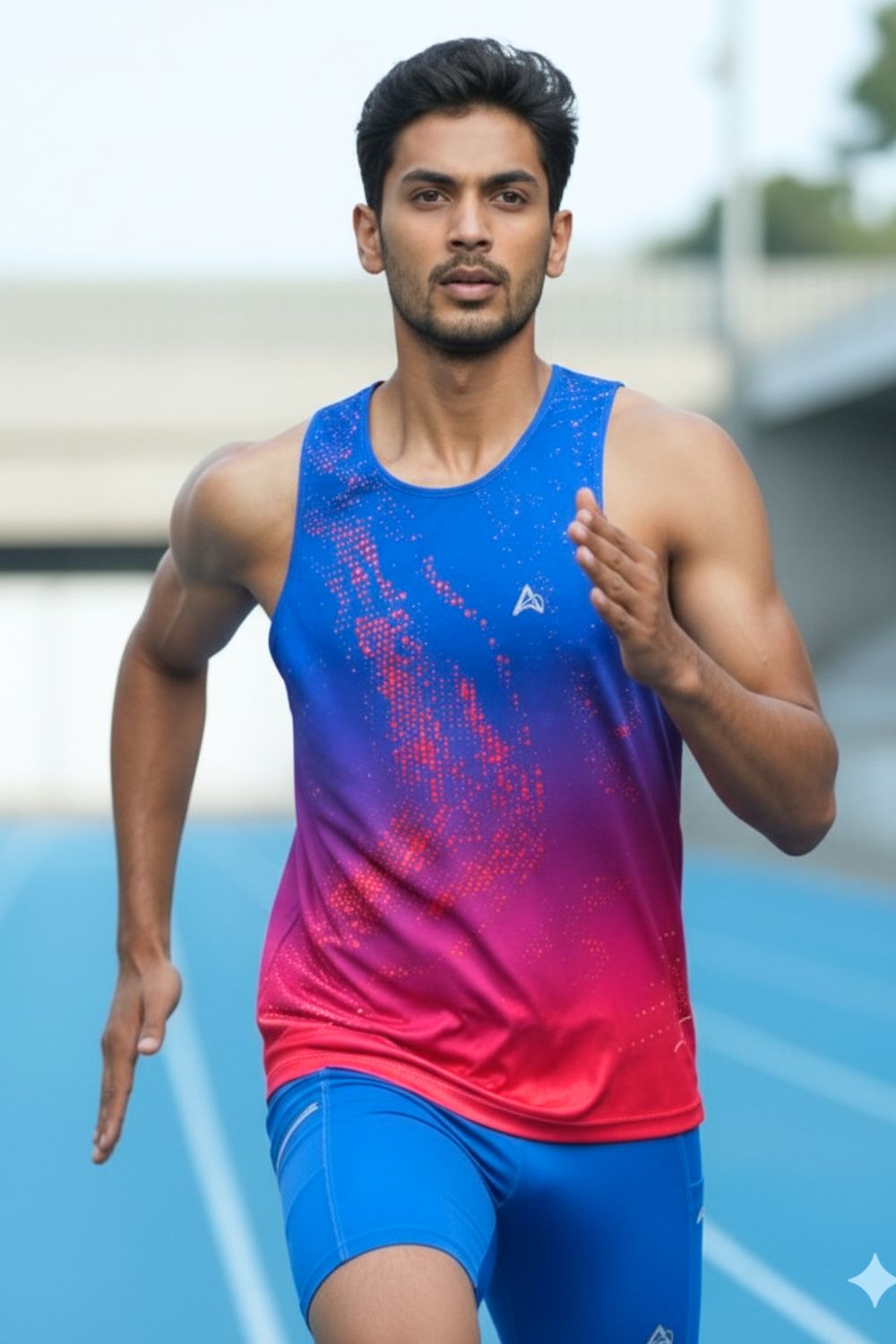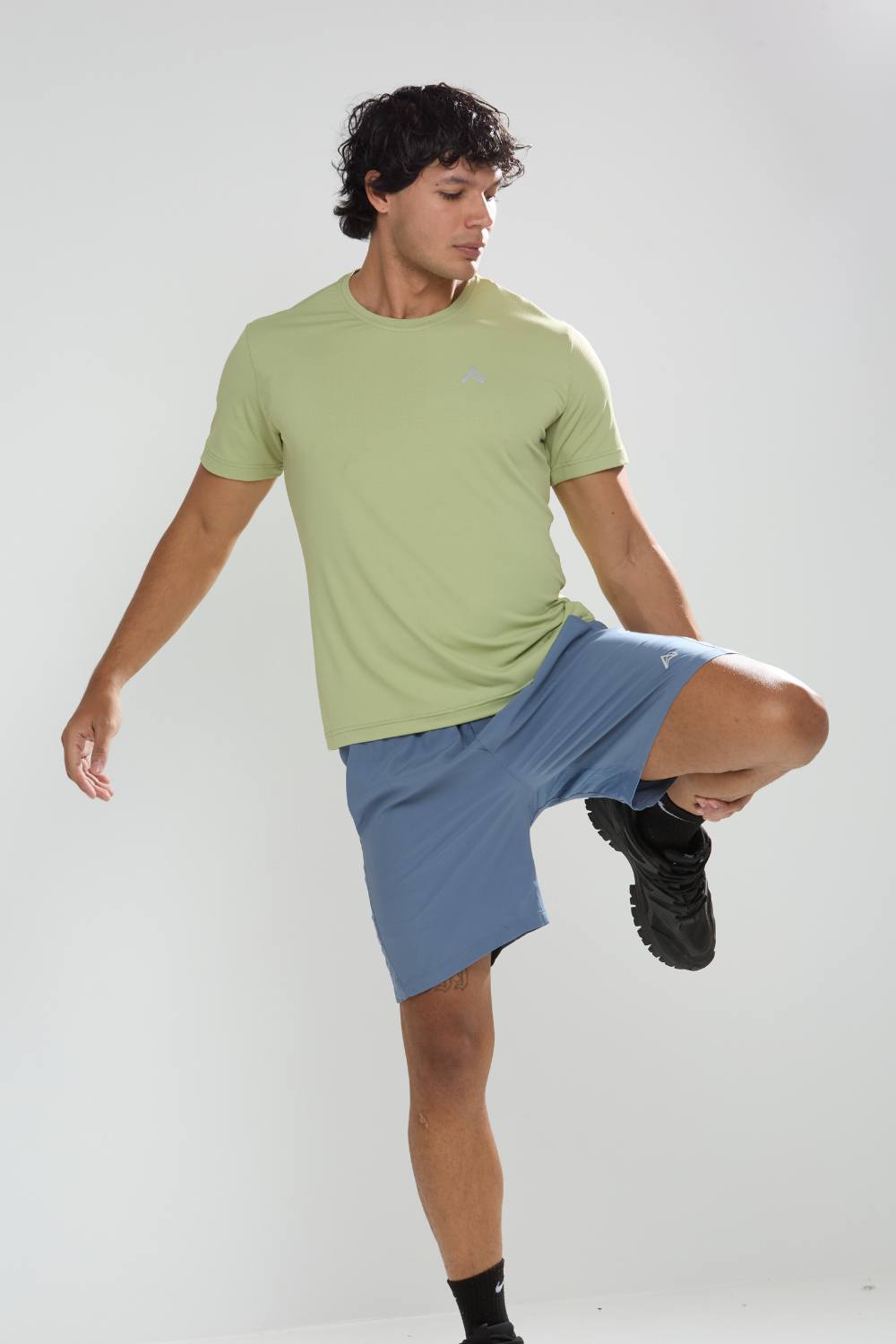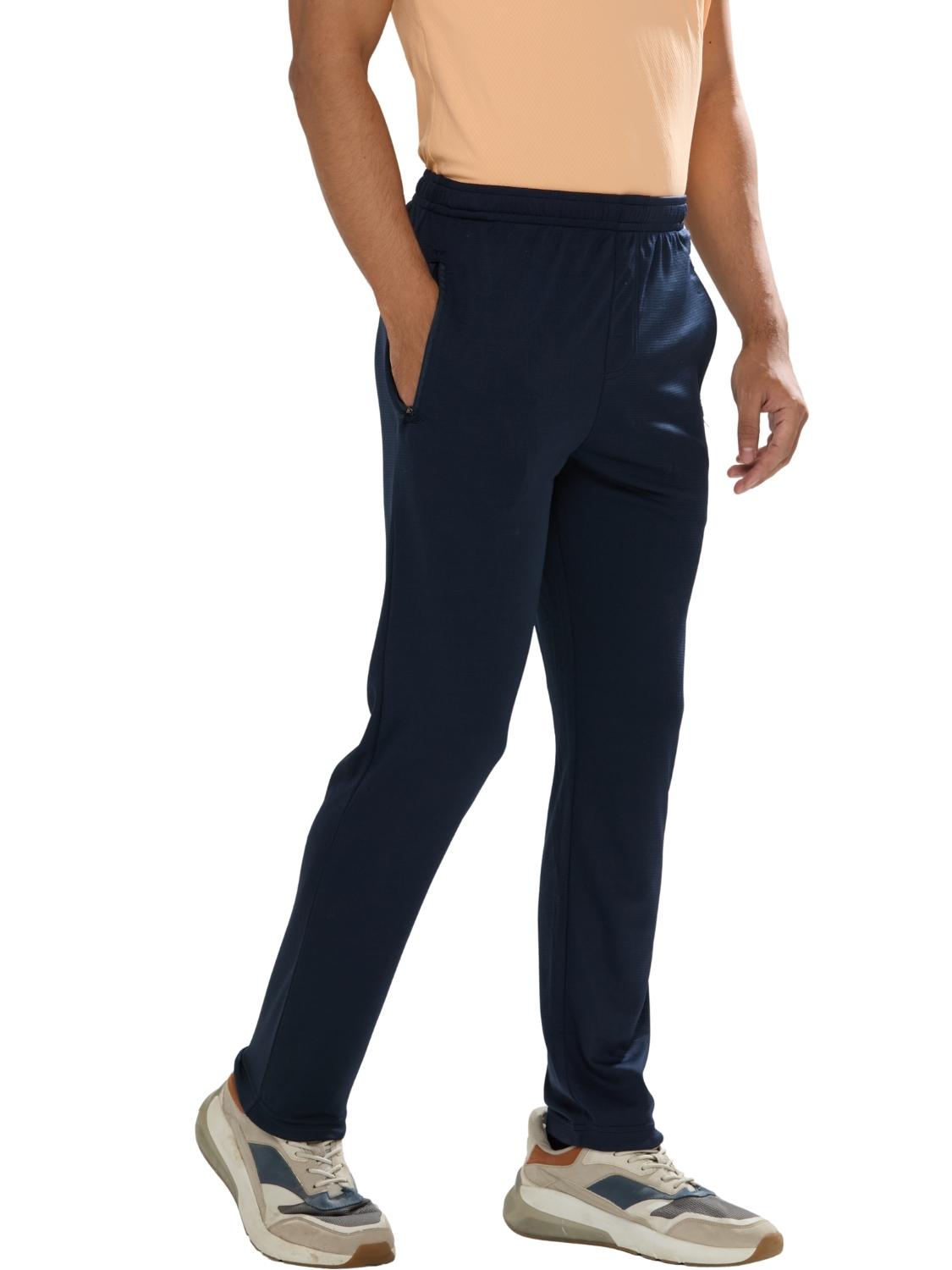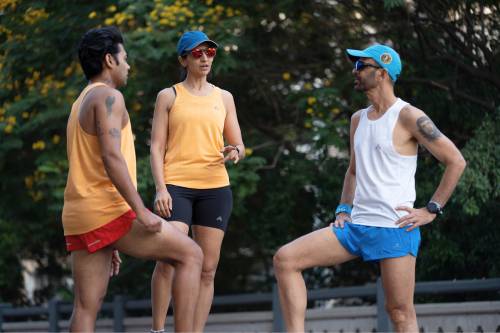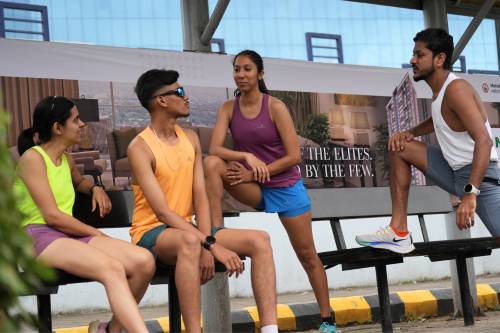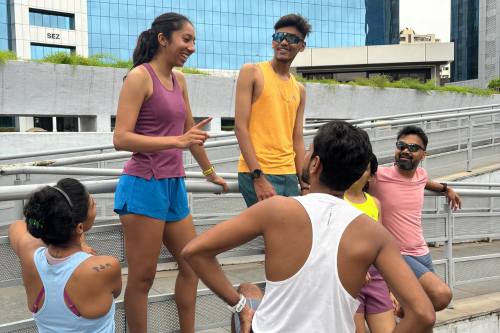Imagine lacing up in the pre-dawn haze of Delhi's Lodhi Gardens, where the air hangs heavy with humidity, and your running gear endures the grind without a hitch no seams digging in, no fabric giving way after repeated washes. This resilience isn't accidental; it's the hallmark of India's evolving textile prowess, transforming the nation from a volume player in apparel to a contender in high-stakes performance wear. As global demand for reliable activewear surges, Indian manufacturers are rising to the occasion, blending tradition with technology to deliver gear that stands the test of time and terrain.
Indian factories are harnessing cutting-edge textiles, stringent quality checks, and eco-friendly practices to produce top-tier activewear that resonates with runners worldwide.
Tired of gear that slows you down? Chafing, soggy fabrics, and missing pockets kill your run's momentum. At Aguante, we're runners who get it. Our high-performance activewear features moisture-wicking fabrics, ergonomic designs, and smart storage to keep you focused. Shop Now!
India's Growing Role in Performance Apparel
For years, the international activewear landscape has been ruled by behemoths known for eye-catching aesthetics and premium pricing. Yet, a quiet revolution is underway, with India emerging as a key player in functional, long-lasting gear. Runners demand more than style; they need apparel that withstands rigorous training, variable climates, and the rigors of daily use. Durability here translates to fabrics that resist wear, maintain shape, and support performance without compromise.
This shift in India's apparel sector has been gradual but profound, evolving from basic export-oriented production to sophisticated, innovation-led manufacturing. The India running gear market achieved a valuation of USD 2.4 Billion in 2024, poised to expand to USD 4.8 Billion by 2033, driven by a compound annual growth rate of 7.71% from 2025 to 2033. This momentum stems from heightened health consciousness, greater involvement in physical activities, urban expansion, and increasing consumer spending power. The surge in recreational jogging, the spread of organized events like marathons in cities such as Bangalore and Hyderabad, athlete-backed promotions, and the rise of online shopping platforms further accelerate this trajectory.
Broadening the lens, the India sports apparel market stood at USD 705.85 Million in 2024, with forecasts indicating growth to USD 1,592.58 Million by 2030 at a robust CAGR of 14.52%. Beyond statistics, this reflects a societal evolution: urban dwellers in Pune and Mumbai are embracing athleisure that seamlessly transitions from workouts to everyday life. Initiatives from the government, such as promoting sports through national programs, coupled with climbing disposable incomes, are propelling this sector forward. E-commerce has democratized access, allowing consumers in Gurugram or Ahmedabad to easily acquire specialized items like running t-shirts for men or women's tank tops.
For industry stakeholders, this landscape brims with potential. India is now offering a diverse array of products, from running footwear and apparel to accessories and fitness trackers, tailored for male, female, and unisex audiences. Distribution spans specialty sports outlets, large retail chains, discount stores, and digital marketplaces like Myntra and Amazon, ensuring wide reach across regions including North India, West and Central India, South India, and East India.
Emerging Trends in Durable Running Gear
Step into the heart of India's textile operations, and you'll witness a fabric renaissance. Advanced materials that efficiently manage moisture, combat odors, and endure abrasion are now commonplace, enhancing the longevity and functionality of running attire.
At the forefront is Tirupur, Tamil Nadu's knitwear epicenter, which commands 60% of India's knitwear exports and generates $4.5 billion yearly. This hub is aggressively shifting toward manmade fibres (MMF), planning to elevate their proportion from 10% to 30% while aiming for a turnover of $10 billion by 2030. The rationale? Synthetic options like polyester composites provide essential elasticity and ventilation, ideal for challenging environments in places like Navi Mumbai or Surat.
Environmental considerations are increasingly integral. Materials sourced from recycled plastics, water-saving dyes, and efficient manufacturing techniques are on the rise, aligning with consumer preferences for sustainable options. As demand for eco-friendly sportswear accelerates, Indian producers are swiftly incorporating these elements to meet global standards.
Technology is another game-changer. Virtual 3D prototyping allows precise adjustments to designs, while automated simulations replicate extensive use to verify endurance. This departure from conventional approaches equips India to rival international competitors on merit, not merely cost, fostering gear that's both resilient and refined.
Real-World Examples and Case Studies
Tirupur's facilities exemplify this progress, innovating not just for mass output but for specialized needs of international labels and domestic enthusiasts. Collaborations between these mills and activewear pioneers result in products rigorously evaluated under authentic scenarios: intense heat, heavy rains, and irregular surfaces typical of Indian runs.
Local brands are leading by example. Aguante, established in 2018 as an Indian activewear specialist, captures this ethos perfectly. Created by and for runners, its collection includes running singlets for men, tank tops for women, shorts, half-tights, and t-shirts, all engineered with practical enhancements like stable pockets, chafe-free interiors, and visibility-boosting reflectors. Committed to innovation, ethical practices, and community impact, Aguante delivers cost-effective, meticulously crafted items available online and in select stores, complete with nationwide free delivery, safe transactions, and a two-week return window. Their goal? To enhance every runner's experience, making endurance pursuits more accessible and enjoyable.
Aguante's edge lies in its tailored approach to India's unique running landscape sweltering temperatures, high moisture levels, and varied paths offering superior airflow and usability that outpace standard offerings. Details matter: fabrics that draw away sweat, shapes honed through athlete trials, and pricing that challenges premium imports without skimping on standards. Running influencers on platforms like Instagram, from barefoot training experts to fitness advocates, frequently praise such equipment for its dependability in real-world applications.
These instances highlight India's contributions to specialized global groups, supporting events from Surat's road races to training regimes in Delhi. It's a fusion of heritage craftsmanship and modern advancements, positioning Indian products as viable alternatives on the world stage.
Key Challenges and Limitations
Progress, however, comes with hurdles. Manufacturers grapple with aligning affordable pricing and substantial research investments, a delicate balance in a competitive arena. Expanding operations while adhering to worldwide quality norms, such as certifications for durability, requires significant capital and expertise not universally available.
Consumer doubt persists: Does locally produced attire, like running shorts or t-shirts, truly compare in lifespan to established names like Nike or Adidas? Perceptions of inferior construction or color retention linger, slowing adoption. Operational issues, including inconsistent supply chains in East India and workforce retention in Tirupur, compound matters. Industry figures note high turnover rates, advocating for better housing to stabilize labor forces.
International logistics pose additional barriers. Although online sales mitigate some issues, timely shipments to distant regions test infrastructure limits. Nonetheless, these obstacles are catalyzing responses, including state-backed programs for advancing technical fabrics and skills development.
Opportunities and Business Impacts
On the brighter side, prospects abound. India stands to emerge as a prime destination for sturdy, value-driven running apparel, redefining the "Made in India" label as one of excellence in functional wear.
Export avenues to areas like Southeast Asia and the Middle East are expanding, bolstered by the "China Plus One" diversification trend favoring spots like Tirupur. As Sunil Jhunjhunwala, managing director of Techno Sportswear, observes, this global pivot is steering buyers toward Indian alternatives, with hopes of penetrating markets in Africa and Latin America. Upcoming trade pacts with nations like the UK, Canada, and Australia promise further access.
Domestically, streamlined local networks enable swift fulfillment for discerning runners in Hyderabad or Bangalore. With an expanding middle class, desire for premium items such as women's running t-shirts or men's half tights intensifies. The e-commerce sector's expansion amplifies this, turning venues like Myntra into vital conduits for growth.
Expert Insights and Future Outlook
Peering forward, India's activewear domain is primed for acceleration, fueled by wellness movements and integrations like intelligent fabrics that track biometrics directly from clothing.
Leaders remain bullish. Arun Ramaswamy of New Man Exports envisions MMF expanding five to sixfold by 2030, without forsaking cotton but prioritizing synthetics. To bridge divides with frontrunners, calls for enhanced tech adoption, worker education, and cohesive production chains echo loudly. Jhunjhunwala stresses the urgency: Tirupur must condense decades of progress into mere years, from yarn creation to complete localization.
Advice for brands includes emphasizing thorough evaluations, securing accreditations, and crafting authentic narratives around production. Leveraging channels like Instagram, Facebook, and YouTube to showcase processes from mill floors to race finishes fosters credibility and engagement.
India's Endurance:Powering the Next Activewear Wave
India's industrial foundation is pivoting from price-driven to capability-centric, with resilient running gear serving as compelling evidence. This metamorphosis echoes larger evolutions in textiles, where perseverance intersects with invention.
With strategic infusions, homegrown entities and providers are set to spearhead international activewear advancements. For enthusiasts whether leisurely striders in Mumbai or dedicated competitors in Pune this heralds equipment that's robust, intuitive, and revolutionary. The path may stretch far, yet India's endurance ensures a strong finish.
Frequently Asked Questions
What makes Indian-manufactured running gear durable compared to international brands?
Indian manufacturers are leveraging advanced moisture-wicking fabrics, anti-odor technology, and abrasion-resistant materials to create long-lasting activewear. Companies like those in Tirupur are shifting toward manmade fibers (MMF) that provide essential elasticity and ventilation, while incorporating rigorous quality testing through virtual 3D prototyping and automated simulations. This technological approach ensures Indian running gear can withstand intense heat, heavy rains, and varied terrain typical of Indian running conditions.
How big is India's running gear market and what's driving its growth?
India's running gear market was valued at USD 2.4 billion in 2024 and is projected to reach USD 4.8 billion by 2033, with a compound annual growth rate of 7.71%. This growth is fueled by increasing health consciousness, urban expansion, rising disposable incomes, and the popularity of organized marathons in cities like Bangalore and Hyderabad. The broader sports apparel market is also expanding rapidly, from USD 705.85 million in 2024 to a forecasted USD 1,592.58 million by 2030.
Are Indian running gear brands like Aguante reliable for serious runners?
Yes, Indian brands like Aguante are specifically engineered for India's unique running landscape, offering superior breathability and functionality for hot, humid conditions. Aguante's products include practical features like secure pockets, chafe-free construction, and reflective elements for visibility, all at competitive prices with nationwide free delivery. The brand focuses on real-world testing and athlete feedback, making their gear suitable for both recreational joggers and serious competitors across India's diverse running environments.
Disclaimer: The above helpful resources content contains personal opinions and experiences. The information provided is for general knowledge and does not constitute professional advice.
You may also be interested in: Sustainable Activewear Gains Ground in India
Tired of gear that slows you down? Chafing, soggy fabrics, and missing pockets kill your run's momentum. At Aguante, we're runners who get it. Our high-performance activewear features moisture-wicking fabrics, ergonomic designs, and smart storage to keep you focused. Shop Now!
Powered by flareAI.co





